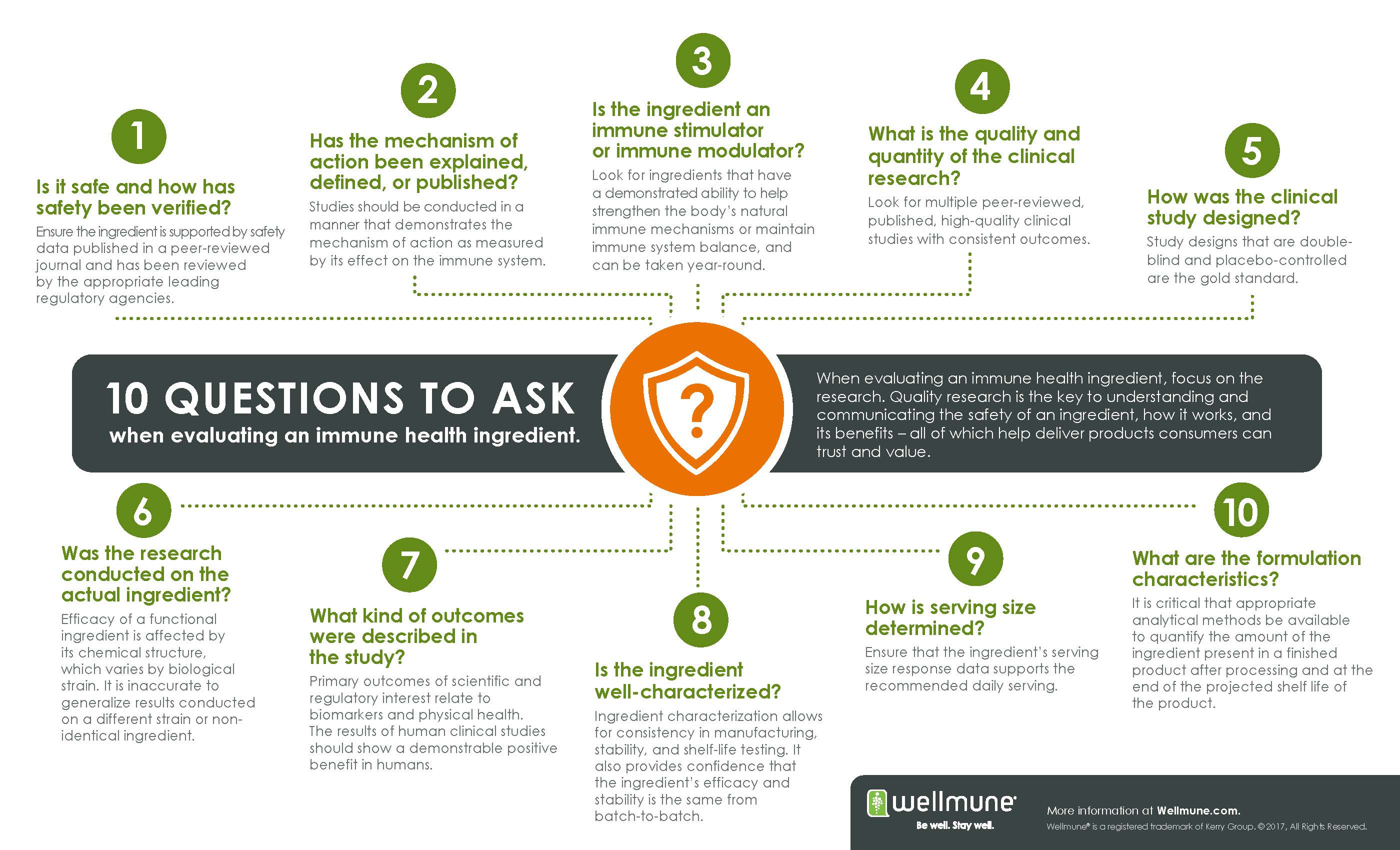10 Questions to Help Evaluate an Immune Health Ingredient
Consumer demand for immune health benefits from functional food, beverages and supplements continues to grow. Although interest in immune health products has accelerated recently, it has been rising steadily. Over the last several years, Mintel reports that global food and drink launches with immune health claims saw a CAGR of 8.2%, and for vitamins and dietary supplements with immune health claims, the figure was 13.6%.[1] Consumers are increasingly turning to products that provide multiple benefits to support need states complementary to immune health as well.
Clearly, consumers are interested in products that support immune health. But the challenge for many product manufacturers is understanding how to choose a safe, efficacious immune health ingredient that can provide the benefits consumers want in everyday foods, beverages and supplements.
Here’s where to start:
When evaluating an immune health ingredient, focus on sourcing products with research supported immune health ingredients. Quality research is the key to understanding and communicating the safety of an ingredient, how it works, and its benefits – all of which help deliver products consumers can trust and value.
Here are 10 questions to ask when evaluating an immune health ingredient.
-
Is it safe and how has safety been verified?
Ensure the ingredient is supported by safety data published in a peer-reviewed journal and has been reviewed by the appropriate leading regulatory agencies.
-
Has the mechanism of action been explained, defined, or published?
Studies should be conducted in a manner that demonstrates the mechanism of action as measured by its effect on the immune system.
-
Is the ingredient an immune stimulator or immune modulator?
Look for ingredients that have a demonstrated ability to help strengthen the body’s natural immune mechanisms or maintain immune system balance, and can be taken year-round.
-
What is the quality and quantity of the clinical research?
Look for multiple peer-reviewed, published, high-quality clinical studies with consistent outcomes.
-
How was the clinical study designed?
Study designs that are double-blind and placebo-controlled are the gold standard.
-
Was the research conducted on the actual ingredient?
Efficacy of a functional ingredient, like yeast beta glucans, is affected by its chemical structure, which varies by biological strain. It is inaccurate to generalize results conducted on a different strain or non-identical ingredient.
- What kind of outcomes were described in the study?
- Primary outcomes of scientific and regulatory interest relate to biomarkers and physical health. The results of human clinical studies should show a demonstrable positive benefit in humans.
-
Is the ingredient well-characterized?
Ingredient characterization allows for consistency in manufacturing, stability, and shelf-life testing. It also provides confidence that the ingredient’s efficacy and stability is the same from batch-to-batch.
-
How is serving size determined?
Ensure that the ingredient’s serving size response data supports the recommended daily serving.
-
What are the formulation characteristics?
It is critical that appropriate analytical methods be available to quantify the amount of the ingredient present in a finished product after processing and at the end of the projected shelf life of the product.
Download10 Questions to Ask When Evaluating an Immune Health Ingredient as a handy reference.

Sources
1 Mintel GNPD (30 April 2020)

